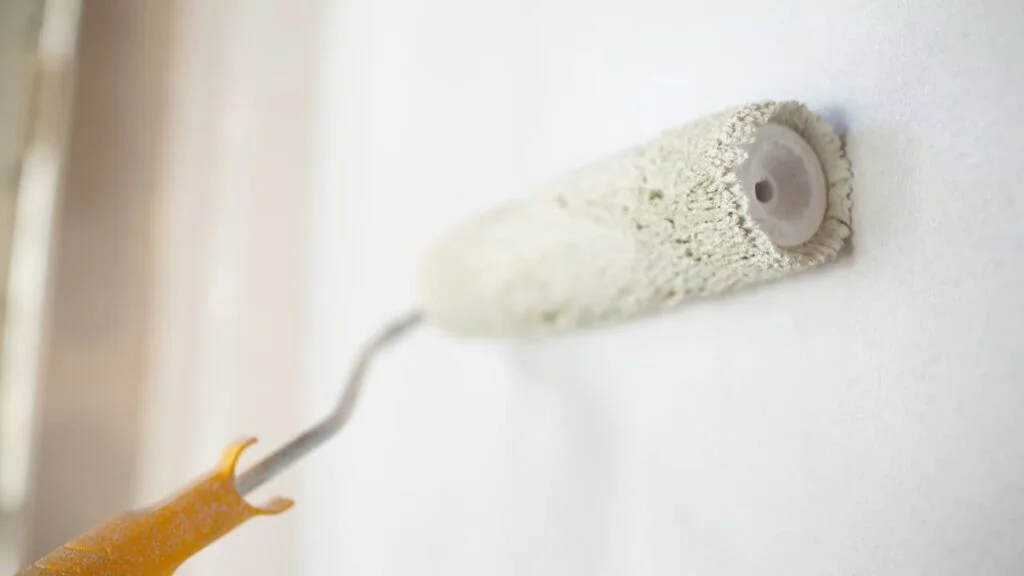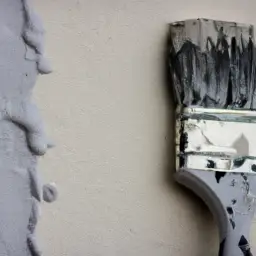So, you’re in the middle of a home improvement project and you’re eager to see the final result of your freshly painted walls. But wait, what happens if you don’t wait for the paint to dry between coats? Well, let us tell you, rushing through this step can have some serious consequences. From uneven color and texture to an increased risk of paint peeling, not letting the paint dry properly can turn your dream renovation into a nightmare.
What Happens If You Don’t Let Paint Dry Between Coats?
In this article, we’ll explore the potential issues that can arise when you neglect to give your paint enough drying time between coats. Trust us, taking the extra time to let that paint fully dry will save you a world of headaches down the line.

Table of Contents
Effects of Not Letting Paint Dry Between Coats
Painting a room can be a time-consuming process, and it’s tempting to rush through it and try to finish as quickly as possible. However, not allowing sufficient drying time between coats of paint can have a number of negative effects on the final result. From an uneven appearance to long-term durability issues, there are several reasons why it’s important to let paint dry properly between coats.
Uneven Appearance
One of the most noticeable effects of not letting the paint dry between coats is an uneven appearance. When you apply a second coat of paint before the first coat has fully dried, it can result in a blotchy finish. The areas where the wet paint overlaps with the partially dried paint can create an inconsistent color and texture on the walls. This can ruin the overall aesthetic appeal of the room and make it look unprofessional.
Furthermore, not allowing proper drying time can lead to visible brush strokes on the painted surface. Brush strokes that haven’t had time to settle and level out can become more pronounced, especially if you’re using paint with a higher sheen. This can leave your walls looking amateurish, with a textured finish that detracts from the smooth and even appearance you desire.
Poor Adhesion
Another consequence of not letting the paint dry between coats is poor adhesion. When the paint hasn’t had enough time to bond with the surface, it may not stick properly. As a result, you may notice areas where the paint starts to chip or crack, especially in high-traffic areas. Additionally, poor adhesion can make it more difficult to recoat your walls in the future. Without a strong bond between the paint layers, subsequent coats may not adhere properly, leading to problems down the line.
Increased Drying Time
Ironically, not letting paint dry between coats can actually increase the overall drying time of your paint project. When you apply a second coat before the first coat has fully dried, the solvents in the paint take longer to evaporate. This means you’ll have to wait longer for the entire paint job to dry and cure. As a result, you may experience extended wait periods between coats and delays in completing your project. So, in the end, rushing through the process can actually backfire and take more time than if you had allowed each coat to dry properly.
Bleeding or Smudging
If you’re working with multiple paint colors and don’t let them dry between coats, you run the risk of bleeding or smudging. When wet paint layers come into contact with each other, the colors can bleed into one another, resulting in an unintended blending effect. This can be particularly problematic if you’re trying to create sharp lines or patterns. Instead of crisp edges, you may end up with smudged or blurred lines, which can ruin the desired visual effect.
Color Mixing
Another potential issue when you don’t let paint dry between coats is unintentional color mixing. When wet paint layers are applied on top of each other, the colors can blend together and create unintended shades. This can be especially problematic if you’re trying to achieve a specific color depth or hue. By rushing the process, you may jeopardize the outcome and end up with a color that differs from your original vision.
Damage to Brushes or Rollers
Skipping the drying time between coats can also result in damage to your painting tools. When wet paint is left on brushes or rollers and they’re immediately reused, the drying paint can dry and adhere to the bristles or surface. This can reduce the efficiency of the application tools and make it more difficult to achieve a smooth and even finish. Furthermore, the dried paint can be challenging to clean off properly, leading to frustrations and potential damage to your brushes or rollers.
Problems with Paint Thickness
Failing to let paint dry between coats can lead to problems with paint thickness. When multiple layers of paint are applied without sufficient drying time, excessive paint can build up on the surface. This uneven buildup can result in inconsistencies in the paint film thickness. Over time, the areas with excessive paint may become more prone to cracking or peeling, compromising the integrity of the painted surface.
Blistering or Bubbling
One of the more unsightly effects of not allowing paint to dry between coats is the formation of blisters or bubbles on the painted surface. When a fresh coat of paint is applied over a partially dried layer, solvents trapped within the paint layers can create pockets of air. As the paint dries, these pockets expand and rise to the surface, resulting in blisters or bubbles. This not only ruins the smooth finish but also diminishes the overall aesthetic appeal of the painted area.
Peeling or Flaking
In addition to blistering and bubbling, not giving paint sufficient drying time can also lead to peeling or flaking. When the paint has not had the opportunity to fully adhere or bond with the surface, it becomes more susceptible to being pulled away or chipped off. This can occur particularly in areas that experience high levels of friction or wear, such as doors, cabinets, or frequently touched surfaces. The premature peeling or flaking of paint not only requires touch-ups but also compromises the long-term durability of the painted surface.
Long-Term Durability Issues
Lastly, not letting paint dry between coats can result in long-term durability issues. When the paint layers haven’t had sufficient time to cure, the overall strength and integrity of the paint film can be compromised. This can lead to a weakened paint film that is more prone to wear and tear, such as scuffs, scratches, and stains. Additionally, the paint may become less resistant to environmental factors like humidity, temperature changes, or exposure to UV rays. In the long run, this can diminish the lifespan and overall quality of your paint job.
In conclusion, while it may be tempting to rush through a paint project, it’s crucial to allow sufficient drying time between coats. Not only can failing to do so result in an uneven appearance, poor adhesion, and increased drying time, but it can also lead to bleeding or smudging, color mixing, damage to brushes or rollers, problems with paint thickness, blistering or bubbling, peeling or flaking, and long-term durability issues.
By exercising some patience and letting each coat of paint dry properly, you’ll ensure a more professional and long-lasting result. Remember, good things come to those who wait – even when it comes to paint!


